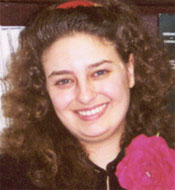Public Relations for Physics Departments: Convincing the Community that Quarks are Cool
The Fundamentals of Launching a PR Program
Alaina G. Levine
 |
A strong public relations program can be of great importance to a physics department. Not only can effective PR improve the reputation of an individual department, but it can also serve the greater physics community by convincing the public that quarks, quantum dots, and nanostructures are cool. Building a solid reputation with the many constituents that a physics department serves can lead to greater media exposure, improved quality of student applicants, community and industrial partnerships, and even financial support.
It isn't difficult to create a strategic public relations program for your department, but it does take planning and commitment of resources. But before you begin to implement PR tactics such as a newsletter, an alumni relations program, public outreach, or an external board of advisors, there are some fundamentals of public relations that must be understood and remembered.
1) Establish the goals of your PR program: Don't enter into the PR game haphazardly. You must identify what your goals are before you begin to think about what tactics to take. Some of your goals might be to inform the publics (the plural is intentional and I will get to that shortly) about your department, bolster the department's reputation in the local community as well as the wider physics and national community, encourage an interest in and support of physics, and promote an understanding of the role physics plays in society. Your PR goals might mirror or act as an extension of the larger goals of your department, but they will not be the same as your wider mission.
2) Identify, remember, and build relationships with your publics: Whom does your department serve? Certainly you have internal constituents such as faculty, students, staff. But what about your alumni? And prospective students? How about parents, teachers, K-12 kids, and government and industrial representatives and organizations? And of course, one cannot forget the general public, nor the greater physics and scientific community. In designing a public relations program, it is absolutely necessary to remember whom you are targeting your PR strategy towards. Identify whom you want to receive the message you are delivering and this will give you the much-needed focus that you strategy deserves.
Great PR is all about building strong relationships with your publics. Once you identify whom your department serves, you can cultivate those relationships to achieve your PR goals.
3) Build your brand: One doesn't often equate a brand with a physics department, but it can be one of the most important tools you have in your public relations toolbox. A brand is a promise: people rely on a brand because they know that that the service or product that the brand represents will consistently deliver something to them. For example, Starbucks Coffee is an example of a successful brand. I know and you know that if we go into any Starbucks Coffee anywhere in the world, we will get the same Starbucks coffee as at the one down the street from us. Their brand is the promise to deliver the same coffee everywhere and their reputation (and success as a company) depends on this promise.
A physics department also needs to build its brand in order to create public support and interest. The most basic promise of a physics department to its publics is to provide excellence in teaching, research, and outreach, but of course there can and should be more to it. By building your brand with your constituents, you can greatly add to the successful and strategic growth of you department.
4) Any public interaction makes you a representative of science: Physics Department PR holds a lot of power. Every time your department is represented in public, either via a newspaper article about your research, or an outreach program for the general public, you not only represent your own department, but you represent all of physics, all physicists, and even all of science and scientists as well. You have the ability to bolster support, both financial and nonfinancial, for your department in addition to the wider scientific community because for much of the public your interaction with them is their first and only taste of science. Always keep this in mind when you execute any PR campaign.
These fundamentals are meant as a guide for you as you decide what PR tactics to take to achieve not only your PR goals, but also the larger goals and even the mission of your physics department. Public relations should not be looked upon as a burden for you and your staff and faculty to undertake, but rather as an essential and extremely effective instrument in your quest for departmental advancement and growth.
In future columns, I will describe how to create and implement PR tactics such a media relations program and an external advisory board.
Alaina G. Levine, the former Communications Director for the University of Arizona Physics Department, currently oversees public, media, and industrial relations for the UA College of Science and its 14 departments. A confessed physics aficionado and former SPS officer, she can be contacted at alaina@u.arizona.edu or 520-621-3374.
©1995 - 2024, AMERICAN PHYSICAL SOCIETY
APS encourages the redistribution of the materials included in this newspaper provided that attribution to the source is noted and the materials are not truncated or changed.
Associate Editor: Jennifer Ouellette
May 2002 (Volume 11, Number 5)
Articles in this Issue

